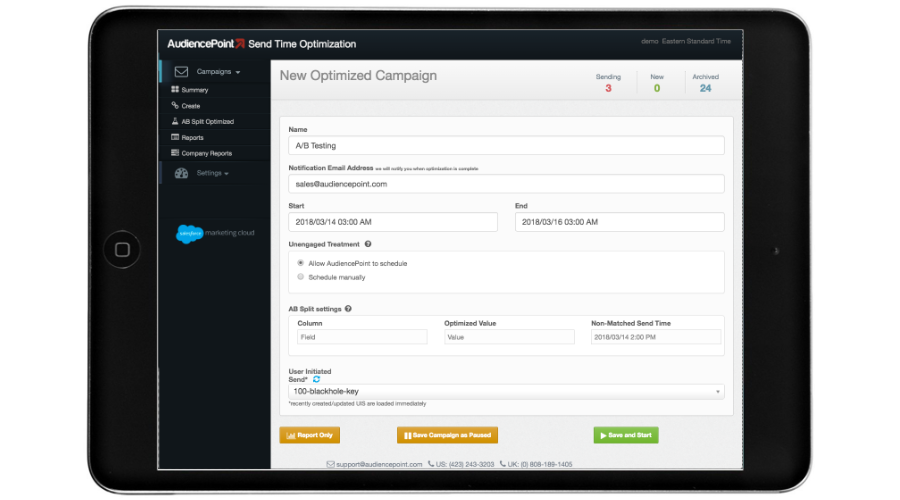AudiencePoint is thrilled to announce our new integration with Klaviyo! AudiencePoint is looking for partners to pilot our...
What Is A Good Open Rate For Email?
Email open rates are a critical metric in email marketing strategy, indicating how well your emails are performing. Understanding what constitutes a good email open rate can help you gauge your campaigns’ effectiveness and identify areas for improvement.
Industry Email Marketing Benchmarks for Open Rates
While the definition of a good open rate can vary, email marketing benchmarks offer valuable insights. On average, a decent open rate falls between 15% and 25%, depending on the industry. For instance, the benchmark open rate for non-profit organizations is often higher, averaging around 24.11%, while the retail sector might see open rates closer to 21.33%. These figures can serve as a useful reference point when evaluating your email campaigns.
Factors That Influence Open Rate Success: The Role of Subject Lines
Several factors can influence your email open rates. Key elements include the relevance and personalization of your content, the quality of your email subject lines, and the consistency of your sending schedule. Segmented email lists also tend to perform better, as they are tailored to your audience’s specific interests. Additionally, optimal timing based on your audience’s behavior can significantly impact your open rates.

What are the Average Open Rates Across Different Sectors?
Open rates can vary significantly across different sectors. For example, the healthcare industry typically sees an average open rate of around 21.72%, while emails in the travel and hospitality sector have open rates averaging 20.03%. Understanding these benchmark open rates within your industry can provide a more tailored perspective, allowing you to set realistic expectations and objectives. Solid open rates are 20% or higher, and email service providers often use these metrics as a baseline for evaluating campaign success.
Ultimately, a good open rate depends not only on industry standards but also on the unique characteristics of your audience and the strategies you employ in your email marketing campaign efforts. You can continuously monitor and optimize these metrics to enhance your campaign’s performance and achieve better results.
The Effect Apple MPP Has Had on Email Open Rates
The introduction of Apple’s Mail Privacy Protection (MPP) has significantly impacted the way email marketers track email open rates. MPP, part of Apple’s iOS15 update, aims to protect user privacy by hiding IP addresses and downloading email content in the background. This innovation has led to inflated email open rate statistics, presenting new challenges for marketers who rely heavily on these metrics to gauge engagement.
Overview of Apple’s Mail Privacy Protection
Apple’s MPP prevents senders from identifying the recipient’s IP address, masking their location and online behavior. Additionally, it preloads email content, such as images, on Apple’s servers once received, regardless of whether the recipient opens the email. This process inflates open rates, making it difficult for marketers to differentiate between genuine and automated opens.
Changes in Email Open Rate Tracking
The changes brought about by MPP necessitate a shift in how marketers measure and analyze open rates and conversion rates. Traditional methods that rely on image pixels to track opens are no longer reliable, as Apple’s servers automatically load these pixels. Consequently, marketers must turn to alternative metrics such as click-through rates, conversion rates, and other engagement indicators that provide a more accurate picture of subscriber behavior.
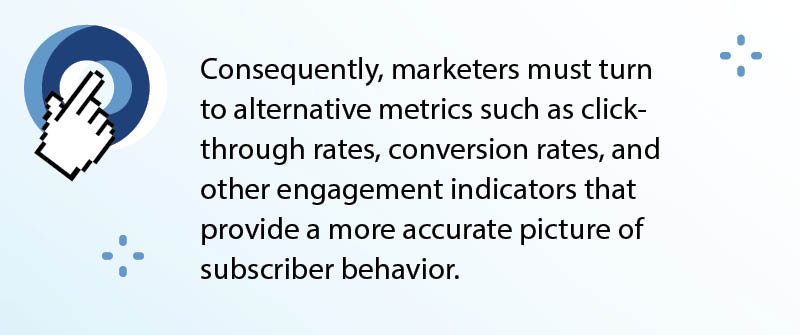
Strategies to Adapt to These Changes
To adapt to the challenges posed by MPP, marketers should diversify their measurement strategies by incorporating email marketing metrics. Focusing on click rates, engagement with specific email elements, and website analytics can offer more reliable insights. Implementing A/B testing to measure effectiveness and better understand subscriber preferences through advanced segmentation are also viable strategies. Utilizing data-driven platforms that dynamically adjust and optimize email campaigns will be crucial in this new landscape.
How Do I Find Open Rate On Email?
As an email marketer, understanding how to find email open rates is crucial for assessing the performance of your campaigns. You must employ various methods and tools to accurately track and calculate open rates. This section will guide you through the steps you need to follow, focusing on three primary methods: using analytics tools, calculating in Excel, and leveraging Outlook.
Tracking Emails Using Analytics Tools
One of the most efficient ways to track email open rates within an email marketing campaign is by using dedicated email analytics tools. These tools automatically calculate and provide insights into your email performance. Some popular analytics platforms include Google Analytics, Mailchimp, and HubSpot. These tools insert a small invisible image, a tracking pixel, into your emails. When recipients open the email, the image loads and sends a signal back to the analytics platform, thereby recording an open. Make sure your email provider supports tracking pixels to utilize this method effectively.
How to Calculate Email Open Rate in Excel?
Excel is a powerful tool if you prefer to manually calculate your email open rate for your email marketing campaigns. Start by exporting your email campaign data from your email service provider. You will need two key data points: the total number of emails sent and the number of emails opened. The email open rate can be calculated using the formula: (Number of Opens / Number of Emails Sent) x 100. This formula will give you the open rate as a percentage. For instance, if you sent 1000 emails and 150 were opened, your open rate would be (150 / 1000) x 100 = 15%.
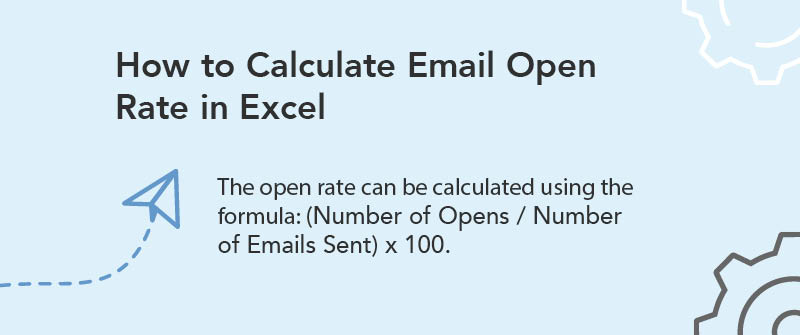
How to Check Email Open Rate in Outlook?
Checking email open rates in Outlook for marketing emails might not be as straightforward as using dedicated analytics tools, but it is still possible. Outlook offers a feature called read receipts, which can be enabled before sending your emails. When a recipient opens the email, Outlook can send you a notification indicating that the email has been opened. However, this method is less reliable since it depends on the recipient, allowing the read receipt to be returned to you. It’s a useful feature for individual emails but may not be practical for bulk email campaigns.
What Is An Open Rate Calculator?
Definition and Purpose of an Email Open Rate Calculator
An email open rate calculator is a specialized tool designed to help you accurately determine the percentage of recipients who open your email. This tool is an essential component in any email marketing strategy, allowing marketers to gauge the effectiveness of their campaigns. By inputting metrics such as the number of emails sent and the number opened, an email open rate calculator automates calculating your open rate, saving you time and minimizing errors associated with manual calculations.
Given the data-driven nature of email marketing, quickly assessing open rates helps you make timely adjustments to your campaign. It also facilitates tracking performance over time, providing valuable insights into what works for your target audience and what doesn’t, which is crucial for improving future campaigns.

Popular Email Open Rate Calculators in the Market
Several email open rate calculators are available, each offering a range of features to simplify metric tracking. Some notable options include Mailchimp’s built-in calculator, HubSpot’s marketing analytics tools, and standalone options like EmailAnalytics. These tools often integrate seamlessly with your existing CRM systems and marketing platforms, offering an intuitive user experience alongside robust functionality.
These calculators provide open rates and integrate other valuable metrics such as click-through rates, conversion rates, and engagement scores, making them a comprehensive solution for email marketers.
Advantages of Using an Open Rate Calculator
An open rate calculator offers numerous advantages, the foremost of which is accuracy. Manual calculations are prone to errors, which can mislead your marketing strategies. Automated tools eliminate this risk, ensuring you have reliable data to make informed decisions.
Another key benefit is efficiency. Automated calculations save time, allowing you to focus on analyzing the results and optimizing your campaigns. Many calculators also offer real-time analytics, giving you instant feedback and enabling agile adjustments to ongoing campaigns.
In summary, an email open rate calculator is a vital asset for any email marketer aiming to enhance the effectiveness of their campaigns. By offering accurate, real-time insights and integrating seamlessly with other marketing tools, these calculators provide a holistic approach to understanding and improving email performance.
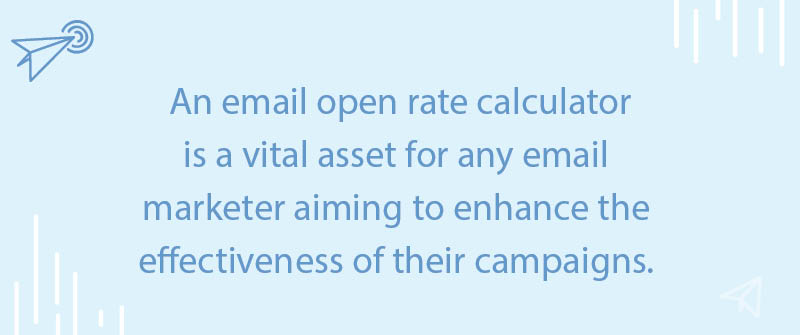
What Is The Formula For Click-To-Open Rate In Email?
Understanding the click-to-open rate (CTOR) is crucial for email marketers aiming to gauge the effectiveness of their email content and overall campaign performance. The CTOR is a more refined metric than the basic open and click rates because it specifically measures the proportion of opened emails that received a click, providing deeper insights into how engaging the email content is for those who read it.
What is the Definition of Click-to-Open Rate (CTOR)
The click-to-open rate (CTOR) identifies the percentage of recipients who clicked on a link after opening an email on various platforms, including mobile devices. It highlights engagement levels from those who interact with your email upon opening it, thus offering a clearer picture of content relevancy and call-to-action effectiveness.
How to Formula to Calculate CTOR
To calculate CTOR, you use the following formula:
CTOR = (Total Unique Clicks / Total Unique Opens) x 100
This formula analyzes the ratio of clicks to opens, shedding light on how compelling your email content, subject line, and design are for your openers. For example, if you had 500 unique clicks and 2000 unique opens, your CTOR would be (500 / 2000) x 100 = 25%, indicating that one-fourth of your openers clicked on a link within your email.
How to Interpret CTOR Results
Interpreting CTOR results requires context. A higher CTOR signifies stronger engagement and relevancy, meaning your audience finds the content pertinent and is motivated to act. Conversely, a low CTOR might suggest improving your call-to-action, email design, subject line or content relevancy. Analyzing CTOR with metrics like click and open rates can help fine-tune your email strategy.
How to Calculate Email Click Rate
Knowing how to calculate the general click rate is helpful in fully understanding CTOR. Use the formula:
Click Rate = (Total Clicks / Emails Delivered) x 100
For instance, if 100 out of 5000 delivered emails received clicks, the click rate would be (100 / 5000) x 100 = 2%. The click rate measures overall engagement, showing how many total clicks your email garnered from all delivered messages.
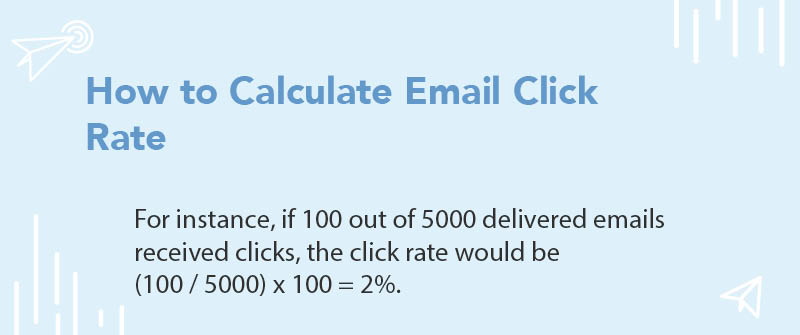
With AudiencePoint’s advanced email engagement platform, you can gain actionable insights and precisely understand your subscribers’ engagement. Our tools provide nuanced metrics, including click-to-open rate calculation, optimizing re-engagement, and maximizing your campaign success. Contact AudiencePoint Today!




